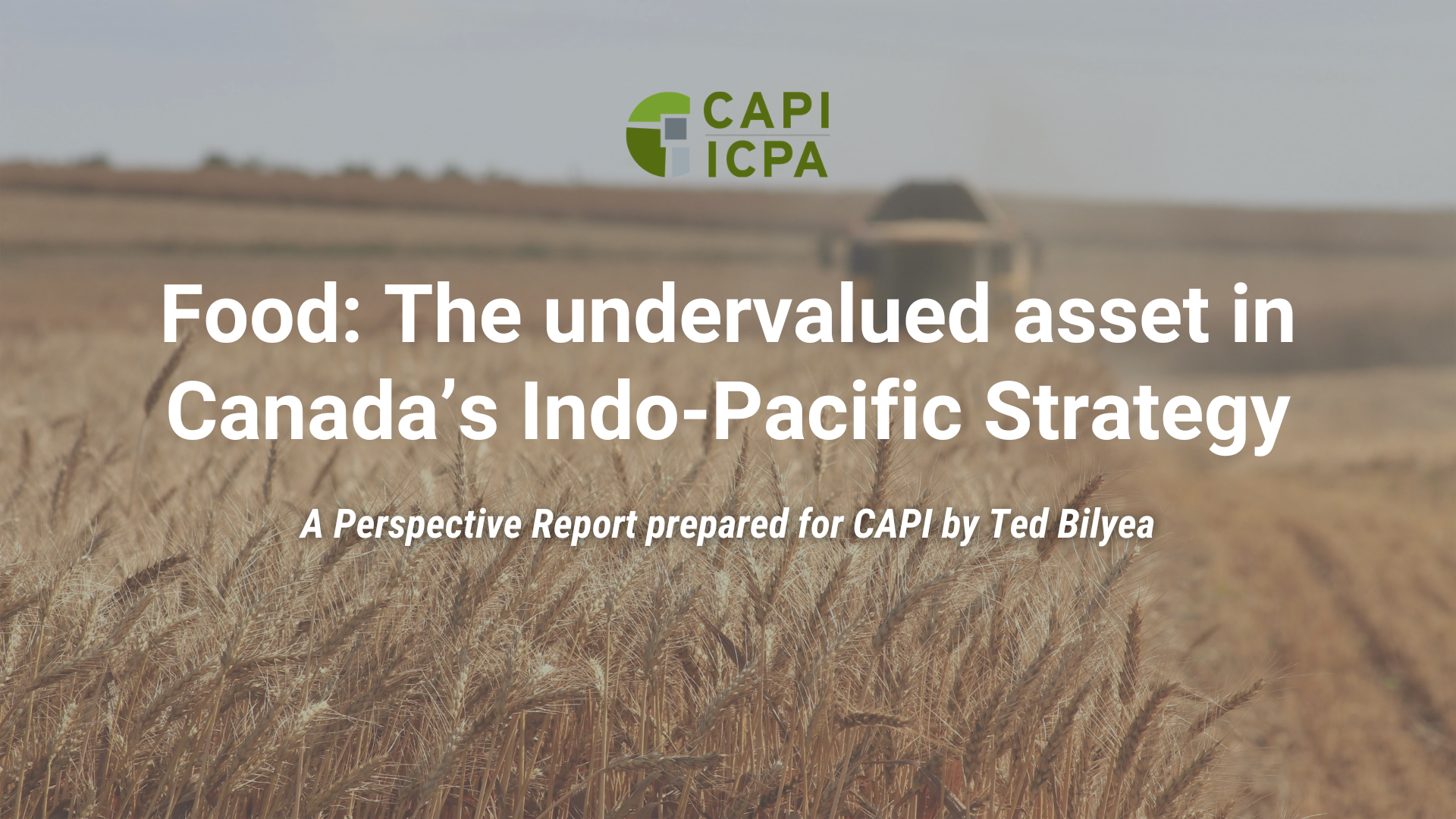Food: The undervalued asset in Canada’s Indo-Pacific Strategy

There are growing opportunities for Canada’s agri-food sector globally right now, particularly in the Indo-Pacific. It is critical that we capitalize on these opportunities by understanding what they are and how we are uniquely positioned to fill the gaps. It is also critical that we develop a strong, and actionable strategy to do so. Here are some elements that should be captured in such a strategy:
Keep the world focused on the coming food security crisis
- Take leadership of the FAO group, with a focus on disseminating and updating the organization’s work on climate change, agricultural trade and global food security
Employ a ‘soft power’ strategy
- Build consensus for a coalition of the willing
- End the weaponizing of food and rebalance the terms of trade
Enhance trading relations with food-deficit allies such as Japan
- Introduce an “Export Assurance” strategy for guaranteed purchases
Rethink a Competition Bureau strategy
- Rethink the Competition Bureau strategy, taking global context into account.
Introduce industrial policy to build our agri-food strategic asset
- Establish plans to grow Canada’s agri-food sector, manage risk, exploit opportunities in the Indo-Pacific and lessen our reliance on the U.S
- Establish strategic initiatives to shift the risk/reward dynamic for SMEs and larger Canadian processors
- Rethink the Canadian innovation system, with a focus on creating opportunities and mitigating existential threats
Use and create FTAs as a strong tool to support the growth of the Canadian agri-food industry
- Ensure existing FTAs are working to the industry’s favour and being enforced (Canada currently has FTAs in all other G7 countries)
- Strategically negotiate new FTAs in other regions of the world (i.e. the Indo-Pacific) to establish long-term regulations for mutually beneficial trade for the future
